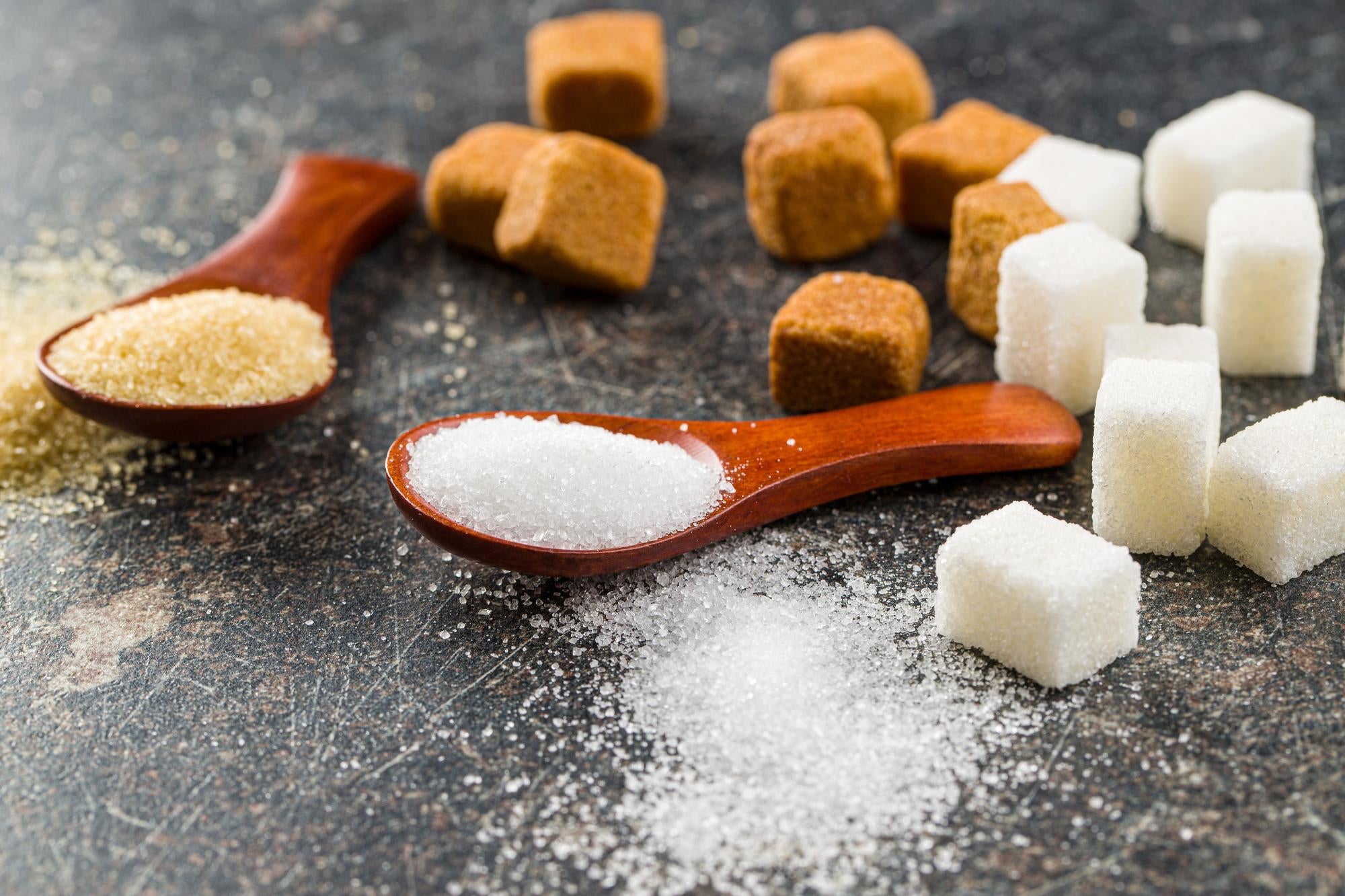Essential insights about Sugar beet vs sugar cane harvesting techniques
All Regarding Sugar Beet Vs Sugar Cane: Which One Provides Greater Benefits and Uses?
The comparison between sugar beet and sugar cane offers a nuanced exploration of their respective advantages and applications. Each plant has distinct dietary profiles and expanding problems that influence their use in numerous sectors. As consumer choices shift towards much healthier options, the relevance of these 2 sources of sugar ends up being significantly substantial. Recognizing their distinctions can expose understandings right into which may inevitably offer better in a transforming market landscape. What variables will shape this ongoing dispute?
Introduction of Sugar Beet and Sugar Cane
Sugar beet and sugar cane are 2 primary sources of sugar, each with distinct features and benefits. Sugar beet, an origin plant mostly expanded in warm climates, is known for its high sucrose web content, which can range from 15% to 20%. This crop is typically refined right into granulated sugar, molasses, and other byproducts. Its cultivation enables a much shorter expanding period and much less dependancy on exotic climates.
On the other hand, sugar cane thrives in warmer, exotic areas and is frequently concerned for its coarse stalks, which can generate 10% to 15% sucrose. The processing of sugar cane not just generates sugar however additionally leads to items like rum and ethanol, making it functional. Both plants contribute considerably to the international sugar market, with their special expanding problems and handling methods influencing their agricultural and economic relevance. Eventually, the selection in between sugar beet and sugar cane usually depends upon local environments and market needs.
Nutritional Profiles: Sugar Beet Vs Sugar Cane
The dietary accounts of sugar beet and sugar cane expose considerable differences in their nutrient structures. Sugar beet tends to supply a greater focus of vitamins and minerals, while sugar cane primarily offers power in the kind of carbs. Additionally, the glycemic index of these two resources differs, influencing their effects on blood sugar level levels.
Nutrient Make-up Contrast
When comparing the nutrient structure of sugar beet and sugar cane, distinctive distinctions arise that can affect dietary options. Sugar beets are recognized for their greater fiber web content, offering around 2 grams of fiber per 100 grams, while sugar cane has very little fiber (Sugar beet vs sugar cane). Pertaining to vitamins, sugar beetroots provide a series of B vitamins, particularly folate, which supports mobile health and wellness, whereas sugar cane consists of less vitamins on the whole. Furthermore, sugar beets boast a higher mineral content, consisting of potassium and magnesium, essential for various physical features. Sugar cane mainly gives carbohydrates, specifically sucrose, yet lacks the nutrient thickness discovered in sugar beets. These distinctions highlight the nutritional benefits of sugar beetroots compared to sugar cane in a balanced diet plan

Glycemic Index Differences
Just how do sugar beetroots and sugar cane vary in their glycemic index, and what implications does this have for people checking their blood glucose levels? Sugar beetroots normally have a reduced glycemic index (GI) compared to sugar cane, which indicates they cause a slower and more progressive increase in blood sugar levels. This distinction is especially essential for individuals with diabetic issues or those worried about blood glucose monitoring. A lower GI food can assist keep steadier power degrees and minimize the danger of insulin spikes. While both resources are mostly made up of sucrose, the varying fiber and nutrient web content in sugar beets might add to their lower GI, making them a possibly much better option for health-conscious customers.
Growing Conditions and Geographical Distribution
Both sugar beet and sugar cane serve as crucial resources of sugar, their expanding conditions and geographical circulation vary considerably. Sugar cane flourishes in exotic and subtropical climates, needing warm temperatures, abundant sunshine, and substantial rains. It is primarily cultivated in nations such as Brazil, India, and China, where these environmental elements are suitable. Sugar beet vs sugar cane. On the other hand, sugar beet likes temperate climates, flourishing in cooler regions with well-drained dirt. Major manufacturers of sugar beet consist of the USA, Russia, and numerous European nations, where the expanding period aligns with cooler temperatures
The distinctions in climate demands result in differing growing methods; sugar cane is often expanded as a perennial plant, while sugar beet is normally grown every year. This geographical distinction not only influences regional farming economies yet likewise shapes local techniques associated with sugar manufacturing and processing. Understanding these factors is crucial for examining the advantages and applications of each resource.
Ecological Influence of Sugar Beet and Sugar Cane Manufacturing
While both sugar beet and sugar cane add considerably to international sugar production, their environmental effects differ considerably. Sugar cane cultivation typically demands huge expanses of land and water, bring about logging and habitat loss in some areas. Furthermore, the use of plant foods and chemicals in sugar cane farming can result in dirt deterioration and water pollution. Conversely, sugar beet is generally expanded in cooler climates and requires less water, which may lower the strain on regional water sources. Nonetheless, intensive farming practices related to sugar beet can additionally bring about dirt erosion and nutrient depletion. The processing of both plants creates waste, however sugar cane has a higher potential for by-products, such as bioenergy, which can alleviate some environmental effects. Inevitably, the sustainability of each crop mostly depends upon farming methods and regional administration strategies utilized throughout the manufacturing cycle.

Handling Methods and Performance
Handling approaches for sugar beet and sugar cane vary substantially, affecting overall effectiveness and yield. Sugar beets undergo a procedure that consists of cleaning, cutting, and extracting juice through diffusion or pushing. The juice is after that purified, concentrated, and crystallized, causing granulated sugar. This approach is usually efficient, with a high sugar removal price.
In contrast, sugar cane handling entails crushing the cane to remove juice, complied with by information and evaporation. The juice is then boiled to produce sugar crystals. While both methods work, sugar cane processing can be more labor-intensive and taxing because of the bigger range of operations and the need for extra substantial equipment.
Furthermore, sugar beet handling usually causes a higher sugar content per heap compared to sugar cane, making it an extra efficient choice in particular regions. Overall, the choice of processing approach impacts not Bonuses only the return yet likewise the economic feasibility of sugar manufacturing.
Applications in the Food Sector
In the food sector, sugar beet and sugar cane offer distinctive duties in sugar production. Each resource uses one-of-a-kind attributes that influence their cooking applications, from baked goods have a peek at this site to drinks. Comprehending these differences can help manufacturers and cooks in choosing one of the most appropriate ingredient for their needs.
Sugar Manufacturing Differences
Both sugar beet and sugar cane serve as important resources for sugar manufacturing, their applications in the food sector vary considerably. Sugar cane is primarily linked with producing raw sugar and molasses, which are extensively utilized in beverages, confections, and baked goods. Its juice is likewise fermented to develop rum. Conversely, sugar beet is generally refined right into polished sugar, which is preferred in the manufacturing of granulated sugar and different other sugar. The extraction process for sugar beet is a lot more simple, enabling greater returns of white sugar. In addition, sugar beet's adaptability enables the development of different sweeteners, such as beet syrup. These differences highlight the unique duties each resource plays in fulfilling the varied requirements of the food sector.
Culinary Makes Use Of Contrast
Culinary applications of sugar beet and sugar cane disclose distinctive preferences among chefs and food suppliers. Sugar cane, often regarded as the conventional sugar, is preferred in a variety of items, including syrups, molasses, and drinks like rum. Its all-natural flavor enhances desserts, marinades, and sauces. On the other hand, sugar beet, made use of primarily in granulated sugar type, is frequently integrated right into baked goods, sweets, and refined foods. Its neutral flavor profile allows it to mix flawlessly into different dishes. Furthermore, sugar beet is getting traction in organic and non-GMO markets, interesting health-conscious consumers. Ultimately, check my source the selection between sugar beet and sugar cane depends upon particular culinary applications, flavor choices, and market trends within the food industry.
Health Considerations and Consumer Preferences
A growing number of customers are significantly familiar with the wellness implications connected with sugar sources, bring about an eager passion in the benefits of sugar beet versus sugar cane. Both sugar sources have unique nutritional profiles that might influence customer options. Sugar beets often tend to include somewhat more fiber and essential nutrients, which can attract health-conscious individuals. On the other hand, sugar cane is often regarded as a much more all-natural and less processed alternative, possibly bring in those looking for organic or raw products.
The climbing appeal of alternative sugar has actually triggered consumers to scrutinize conventional sugars much more closely (Sugar beet vs sugar cane). Understanding of excessive sugar consumption's wellness threats, such as excessive weight and diabetes, has actually sustained a demand for openness regarding the beginnings and processing approaches of sugar. Eventually, individual preferences continue to shape the debate between sugar beet and sugar cane, showing a wider trend towards healthier eating practices and notified consumerism
Often Asked Inquiries
What Are the Historical Uses of Sugar Beet and Sugar Cane?
Historically, sugar beet and sugar cane have actually worked as key resources of sugar. Sugar cane, grown for centuries in tropical areas, supplied sugar, while sugar beet arised in Europe throughout the 18th century, enhancing local sugar manufacturing.

How Do Sugar Beet and Cane Affect Citizen Economies?
Sugar beet and sugar cane substantially effect neighborhood economies with work production, farming productivity, and trade. Their cultivation promotes rural development, sustains neighborhood services, and generates tax revenue, eventually enhancing area sustainability and economic durability.
Are There Any Type Of Social Importance Distinctions In Between Sugar Beet and Cane?
Cultural importance differs in between sugar beet and sugar cane. Sugar cane typically stands for exotic heritage and conventional methods, while sugar beet is connected with farming technology and industrialization, showing different local identities and historical contexts in their production.
What Are the Main Pests Affecting Sugar Beet and Sugar Cane?
The main insects affecting sugar beet consist of aphids and origin maggots, while sugar cane faces dangers from borers and planthoppers. Both plants need cautious monitoring to alleviate damages and assurance healthy and balanced returns.
Exactly How Do Climate Adjustments Effect Sugar Beet and Sugar Cane Farming?
Climate modifications greatly influence sugar beet and sugar cane farming by changing growth conditions, moving bug populaces, and affecting water accessibility. These variables can reduce returns and influence overall agricultural sustainability in influenced areas.